Several species of the Basque coast threatened
Appreciated knowledge of all
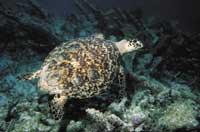
Although the fishing tradition of the Basque Country is long, knowledge of coastal species and habitats is limited. Given this gap, the AZTI Foundation has been conducting a study of coastal marine species for six years. The project arises at the request of the Department of Agriculture and Fishing of the Basque Government and is led from the beginning by Raúl Castro Uranga.
The first objective of this work is to produce the Basque Catalogue of Threatened Species, according to Ainhize Uriarte, a member of the project: “To know what measures to take to protect the populations of the species present on our coast, it is essential to identify and know them.” The catalogue is expected to be released by autumn. In it a classification will be made taking into account the rarity, the uniqueness of each species, its decline throughout history, its ecological importance, etc. This will be the first step, as the AZTI researchers then hope to dive into deeper research.
To carry out the research, AZTI has had the collaboration of entities, naturalist associations, foral deputies, sailors and fishermen. However, the technological institute sees the need for more observers and, in order to increase the participation of the public, has taken out the first collection of species observed to date. A new information exchange section will also be opened on the AZTI website ( www.azti.es ).
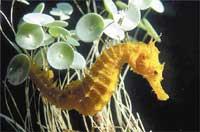
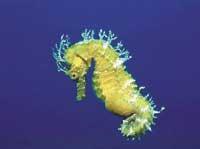
To complete the project, AZTI wants to be informed of any species accidentally captured or observed on the coast, since any data can be valuable. It is recommended not to touch the animal in case of being injured and call the services of emergency or marine salvage.
However, in the words of Ainhize Uriarte, “the data provided by the collaborators are punctual and although they indicate the distribution of the species, we do not have abundance data. For this purpose, we must present projects and make systematic observations that could be supported by public institutions.”
On the other hand, Ainhize Uriarte stressed the need to take the Gulf of Bizkaia as a whole and collaborate with Spanish and French institutions.
Threatened species
According to Ainhize Uriarte, “the coast of Euskal Herria is richer than expected, and proof of this are the many species that have been improvised in the observations.” Unfortunately, many of these species, some 70, are classified as threatened and vulnerable in the IUCN red list. Therefore, the coast is rich, but it must also be taken care of closely.
Among the 70 threatened species are the snail, the giant shark, the guardian angel, marine horses and sea turtles.
At the moment two species of marine horses have been visited on the Basque coast, Hippocampus hippocampus and H. ramulosus. They are observed in shallow waters and accumulations of algae near the beach.
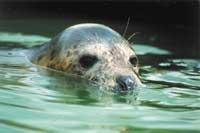
As for turtles, in 2001, ten young people from Florida, the Caribbean and Central America appeared on the Basque coast. Among them stand out the real turtle and the leather turtle. Ainhize Uriarte recalled that “last year, on the coasts of Euskal Herria, about ten sea turtles appeared, although it is not usual that so many individuals appeared.” In order to preserve and protect the turtles that approach the Gulf of Bizkaia, the aquariums of San Sebastián and La Rochelle collaborate and, at the moment, release them on the rural beaches. As for the leather turtle, “it is a large animal that was last seen a decade ago in Getaria and Ondarroa.”
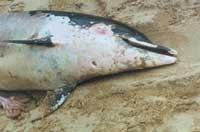
The brunette (Muraena helena), known to divers, is also a fish shaped like an eel. It is a predatory fish that hunts by night and rests by day. Although it is a special fishing for divers, in the Gulf of Bizkaia there are very few and should not be fished.
Another striking family is that of pinypeds or seals. According to data from Ambar, last year, the pinypeds found on the Basque coast were found on the Gipuzkoan coast. The grey seal ( Halichoerus grypus ), the common seal ( Phoca vitulina ), the hooded seal ( Cytophora cristata ) and the mortsa ( Odobenus rosmarus ) are the pinipeds that approach our coast. The grey seal usually does not reside in the Gulf of Bizkaia, but the currents bring here, without strength and without direction, to the young individuals of the colonies that inhabit the southeast of the British Isles and in the Finister of Brittany.
Cetaceans, whales and whales
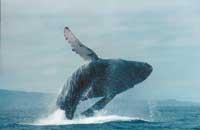
Cetaceans are also threatened species as fishing resources. Within this group stand out the dolphins that are exhibited in the campaign of the bonito. At this time, following the groups of sardines and chicharros, they walk very close to the coast. According to AZTI data, there is a population of common winter dolphin on the Basque coast, some of which have been observed in Cape Matxitxako. A total of 100 common dolphins live on the Basque coast. The case of the dolphin mular, known as Pakito, who lives in the bay of La Concha, is of another type, since it is on the list of threatened. This dolphin appears along the European coast, but in very specific places.
On the other hand, the whales of beak have also been seen. The most represented species is the cuvier bullet peak ( Ziphius cavirostris ). In the summer of last year, three appeared in Elantxobe, Barrika and Zumaia. According to Ambar, the three were female and in the stomach it was seen that they had a lot of plastic. Therefore, although it is still too early to say what is the impact of pollution on these species, it is evident that the dirtiness of the river has negative consequences.
The porpoise has also ceased to be common on our coast and is considered a threatened species. This animal is the most coastal and therefore suffers directly the pollution. It was formerly very common in the Gulf of Bizkaia, but in the last 30 years it has practically disappeared from the Basque coast. The non-loss of this species is a priority in the European Union.
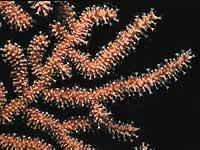
Another representative species in danger of extinction is the southern whale or the Basque whale. This animal was last weighed in Orio about 100 years ago. Currently the only fixed population of this species resides on the coast between Canada and the US. It is estimated that this group does not reach 200 individuals and its reproduction rate is very low. They usually float near the coast and are not altered by the proximity of fishermen, which allows them to fish easily. They are among the most threatened marine species. The most common whale we find today in the Gulf of Bizkaia is the common whale that is quite close to the coast. In 2001, a whale of this species appeared on the beach of Castro Urdiales, and experts estimate that every year dozens of common horses pass through the Basque coast.
Ambar, association for the research and protection of marine fauna
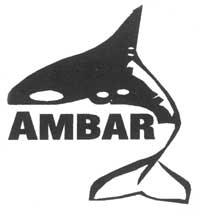
Currently, the association has the following projects: Registration and collection of information of mammals and sea turtles that disembark on the coasts of Bizkaia and Gipuzkoa, observation of cetaceans from the Gulf of Bizkaia both from the land and from the ferry Bilbao-Portsmouth and analysis of the behavior of the dolphin mular Pakito (Tursiops truncatus), which lives in the bay of San San San.
At the moment, they have been able to identify 23 species of cetaceans, some of them very well known to all, such as the dolphin mular, the common dolphin, the pilot dolphin or the common whale. But, in addition, they have seen other rare species, such as Hiperoodon ampillatus, which inhabit great depths, or Ziphius cavirostris (peak bullet), which have observed around the pit of Cap Breton. Recently observations have been initiated from the coast and it seems that it is relatively easy to see from the ground groups of prismatic dolphins.
The behavior of the dolphin Pakito is also being studied for a long time. Since his arrival they have followed him and has a rather curious history. Initially appeared in the area of Igeldo, along with two other dolphins, an adult and a puppy. After two months in the area, the other two disappeared and Pakito stayed alone. It seems that its preferred place is the bay, since it has been residing in it for four years. This year the members of Ambar plan to make dives to take photos close to the animal and know all its characteristics.
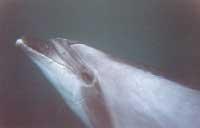
All that has so far been known about the cetaceans of the gulf is only the basis of future projects and works. There are still many unanswered questions left and Ambar intends to continue investigating to, at least, obtain some of them.
For more information on cetacean landing: www.geocities.com/ambar112 and contact Ambar: jasper@euskalnet.net .
Buletina
Bidali zure helbide elektronikoa eta jaso asteroko buletina zure sarrera-ontzian











